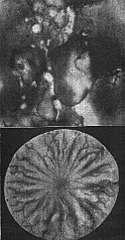Franciszek Rychnowski: Difference between revisions
Appearance
Content deleted Content added
m Bot: Migrating 14 interwiki links, now provided by Wikidata on d:q538555 (Report Errors) |
Persondata |
||
| Line 25: | Line 25: | ||
| NAME = Rychnowski, Franciszek |
| NAME = Rychnowski, Franciszek |
||
| ALTERNATIVE NAMES = |
| ALTERNATIVE NAMES = |
||
| SHORT DESCRIPTION = |
| SHORT DESCRIPTION = POlish engineer |
||
| DATE OF BIRTH = 1850 |
| DATE OF BIRTH = 1850 |
||
| PLACE OF BIRTH = |
| PLACE OF BIRTH = |
||
Revision as of 06:41, 15 May 2013

Franciszek Rychnowski (1850-1929) was a Polish engineer and an inventor, who also lectured at the Lwów Politechnic. In addition to mundane projects (he was involved with electrification, central heating and the tram system in Lwów, which is now Lviv, Ukraine), he also gained fame for his pseudoscientific theories on eteroid, similar to the concepts of élan vital or orgone; involvement with such pseudoscientific theories eventually ruined his career.[1]
Rychnowski is a minor character in a series of books by the modern Polish author, Andrzej Pilipiuk. He is also one of the central characters in the 2012 fictional conspiracy thriller The Man With the Devil's Hand by Jarek Garliński.
Notes
See also
Further reading
- Andrzej Pilipiuk, Inżynier Rychnowski, PORTAL, 2/99 ([1])
- Bolesław Prus, Zygmunt Szweykowski, Z prac Instytutu Badań Literackich Polskiej Akademii Nauk, Państwowy Instytut Wydawniczy, 1970
- Historia kultury materialnej Polski w zarysie: opracowanie zbiorowe, Zakład Narodwoy im. Ossolińskich, 1979
